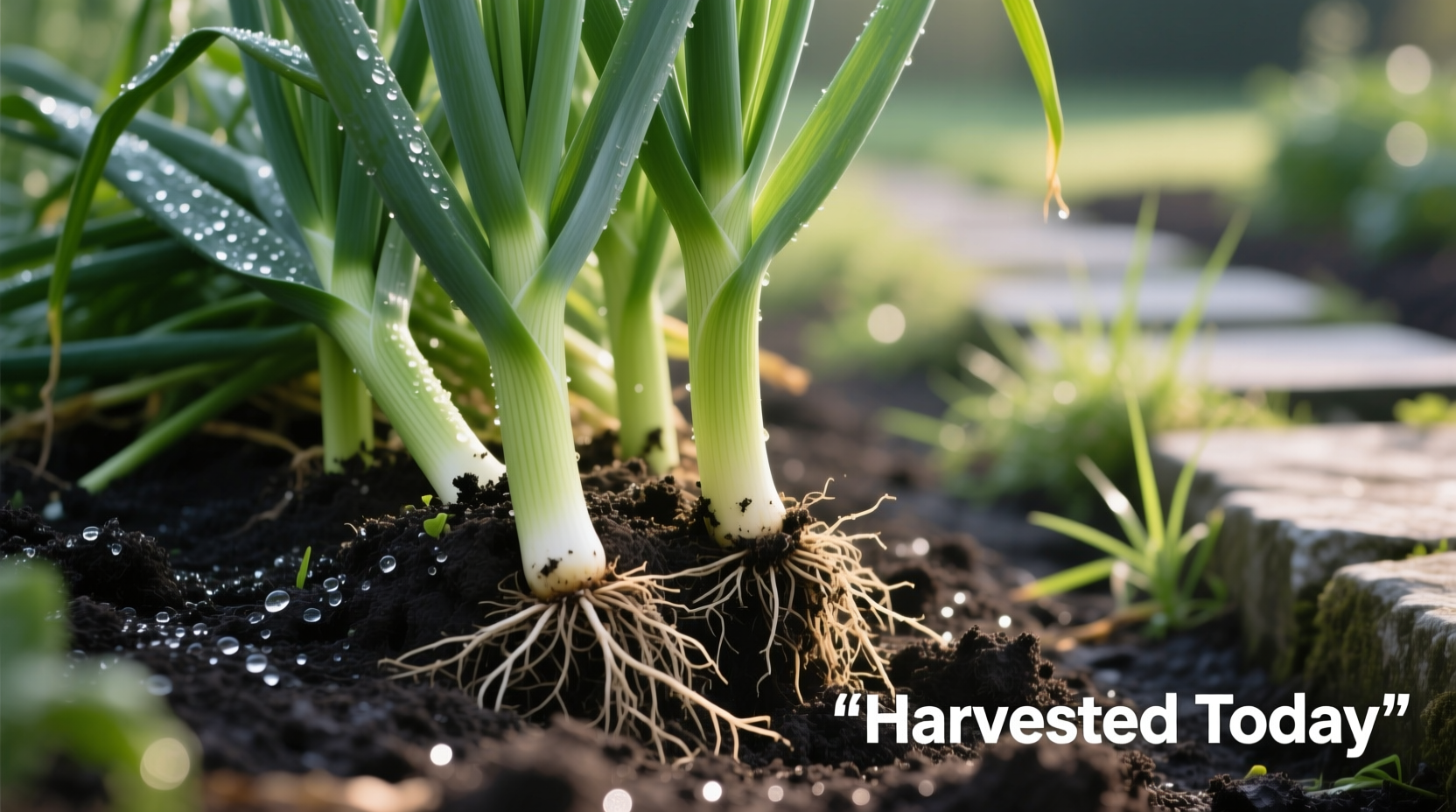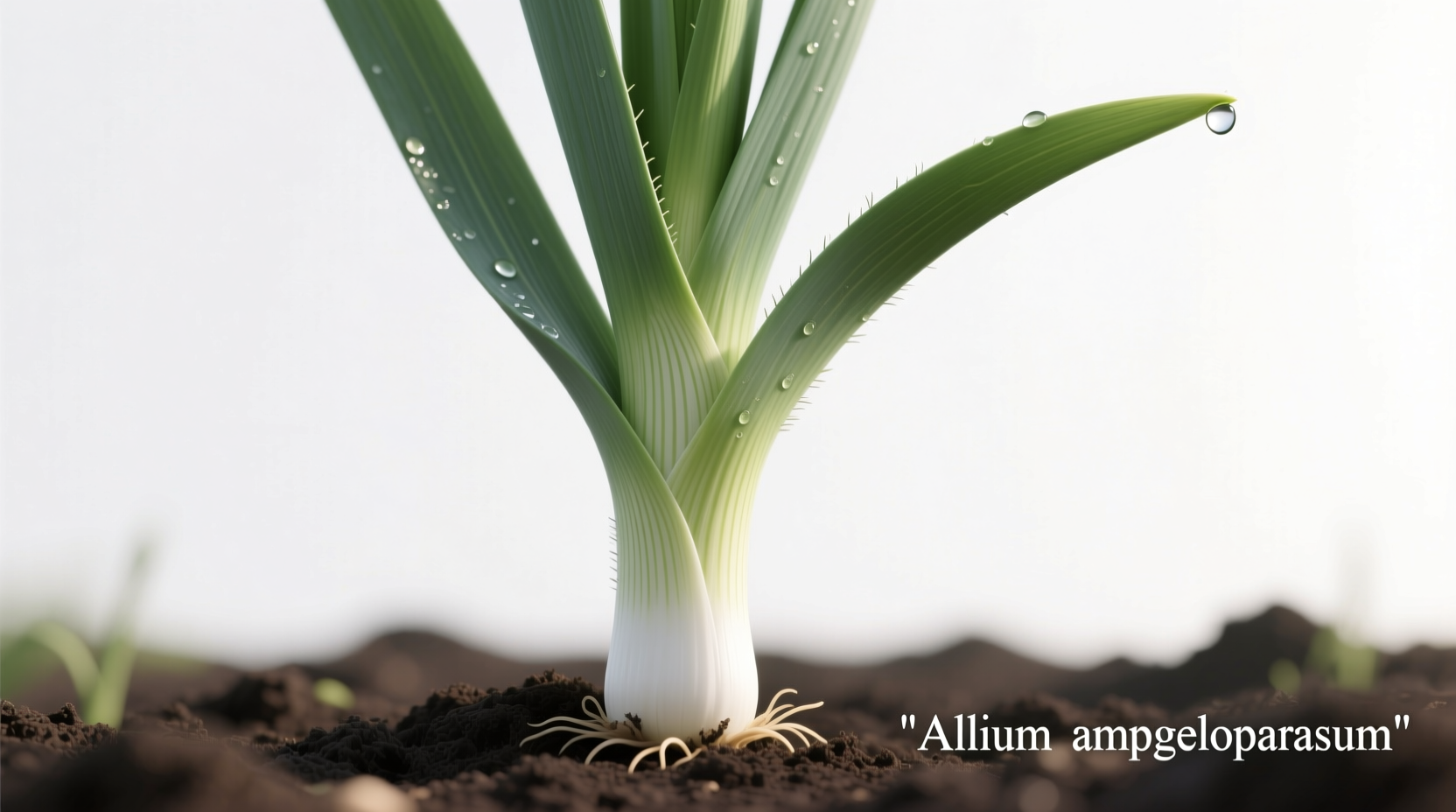The leek plant (Allium ampeloprasum var. porrum) is a hardy biennial vegetable in the onion family, prized for its mild, sweet flavor and versatility in cooking. Unlike onions, leeks develop an elongated cylindrical stalk rather than a bulb. This comprehensive guide provides everything home gardeners need to successfully grow leek plants from seed to harvest, including optimal planting times, soil requirements, pest management strategies, and culinary applications. Leeks thrive in USDA zones 2-9 and require 120-150 days to reach maturity.
What Exactly Is a Leek Plant?
Leeks are members of the Allium genus, closely related to onions, garlic, and shallots, but with distinct characteristics that make them valuable in both gardens and kitchens. The edible portion consists of the white and light green cylindrical stem formed by overlapping leaf sheaths. According to the USDA Agricultural Research Service, leeks contain significantly higher levels of flavonoids than their onion relatives, contributing to their milder flavor profile and impressive nutritional benefits.

Your Step-by-Step Leek Growing Journey
Starting Your Leek Plants: Seeds vs. Sets
Professional gardeners typically prefer starting leeks from seed for greater variety selection and stronger root development. The University of California Cooperative Extension recommends sowing seeds indoors 8-10 weeks before your last expected frost date. Use a seed starting mix in trays with individual cells, planting seeds ¼ inch deep. Maintain soil temperature between 65-75°F (18-24°C) for optimal germination, which typically occurs within 10-14 days.
Transplanting for Maximum Growth
When seedlings reach pencil thickness (about 6-8 inches tall), they're ready for transplanting. The Royal Horticultural Society recommends a technique called "deep planting" to encourage longer white stems: dig holes 6 inches deep and 6 inches apart, placing one seedling per hole without bending the roots. Fill the hole with water rather than soil initially, allowing sediment to gradually settle around the roots over several waterings.
| Variety | Maturity (Days) | Cold Hardiness | Best For |
|---|---|---|---|
| King Richard | 75-85 | Moderate | Early season harvest |
| Blue Solaise | 120-130 | High | Cold climates, winter harvest |
| Lincoln | 110-120 | High | All-purpose, storage |
| Jolant | 100-110 | Moderate | Container gardening |
Essential Care Throughout the Growing Season
Consistent moisture is critical for leek plants—aim for 1 inch of water per week. The Cornell University Gardeners' Resource emphasizes that irregular watering causes tough, woody stalks. Begin blanching when plants reach 8-10 inches tall by gradually mounding soil around the stems, leaving only the top third exposed. This process creates the desirable long white shaft and prevents bitterness from sun exposure.
Pest and Disease Management
Leek moth (Acrolepiopsis assectella) has become increasingly problematic in North America. The USDA Integrated Pest Management guidelines recommend using floating row covers from transplanting through mid-summer to prevent egg-laying. For established infestations, apply Bacillus thuringiensis var. kurstaki (Bt) according to label instructions. Common diseases like rust and white rot can be minimized through crop rotation—avoid planting in the same location more than once every three years.
Harvesting at Peak Flavor
Harvest leeks when the stem diameter reaches 1-2 inches. Gently loosen soil with a garden fork before pulling to avoid breaking the stalk. The National Gardening Association notes that leeks actually improve in flavor after exposure to light frosts, making them ideal for fall and winter harvests. For continuous harvest, plant multiple varieties with different maturity dates.
Culinary Applications and Nutritional Benefits
Leeks contain 20% more vitamin K and 15% more vitamin A than onions by weight, according to USDA FoodData Central. When preparing leeks, thoroughly wash between layers to remove trapped soil. Professional chefs recommend slicing diagonally to maximize surface area for caramelization. For the best flavor development, sauté in butter over medium-low heat for 20-25 minutes until golden brown—this slow cooking process transforms their natural sugars and creates complex flavor compounds.
Troubleshooting Common Leek Growing Problems
Thin, weak stalks: Usually indicates insufficient nitrogen. Side-dress with compost tea when plants reach 6 inches tall.
Yellowing leaves: Could signal leek rust infection. Remove affected leaves immediately and improve air circulation.
Split stems: Typically caused by irregular watering. Implement consistent irrigation schedule.
Poor blanching: Inadequate soil mounding. Gradually build up soil around stems throughout the growing season.











 浙公网安备
33010002000092号
浙公网安备
33010002000092号 浙B2-20120091-4
浙B2-20120091-4